#egyptologist
Text
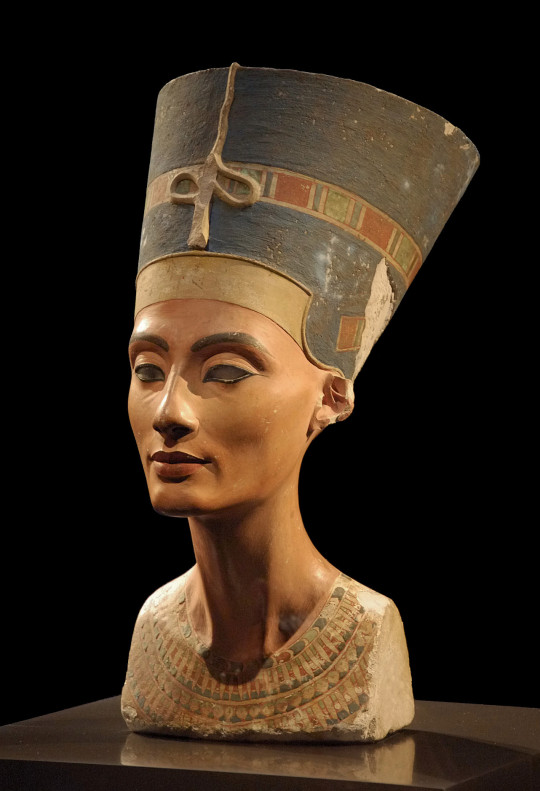
Nefertiti Bust (1345 BC)
#archaeology#archaeologists#egypt#egyptology#egyptologist#anthropology#artifact#artifacts#art history#1300s BC#statue#bust
744 notes
·
View notes
Text
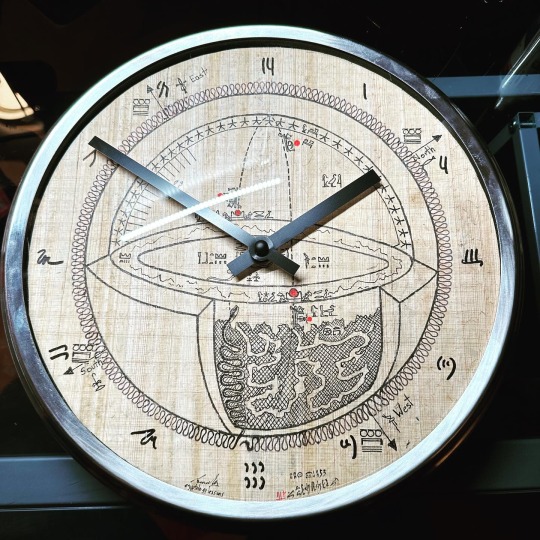

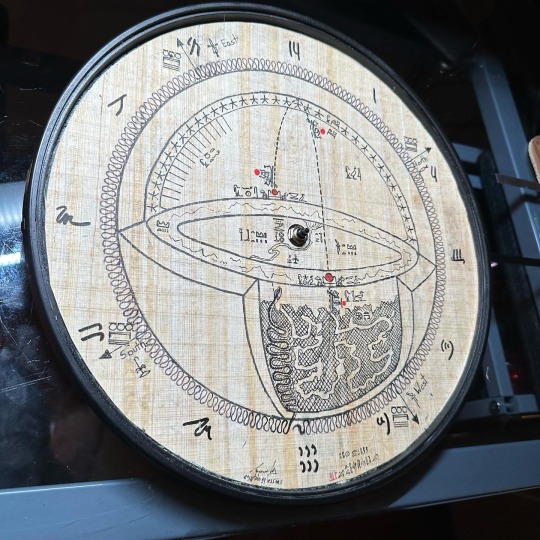





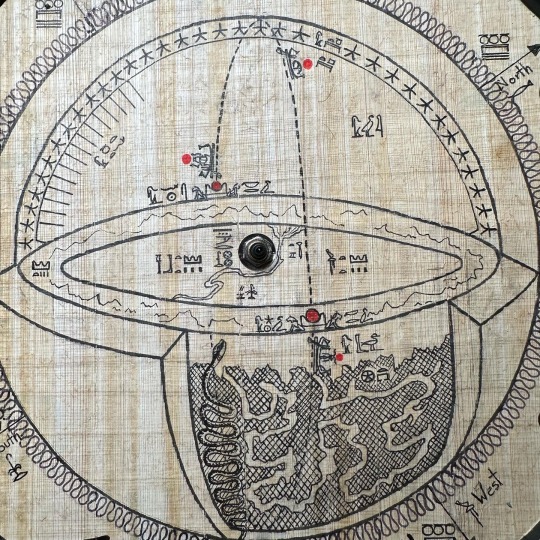

A modern recreation of the Ancient Egyptian cosmological world. The video provides details and explanation of the art, which is greated on natural papyrus paper.
Dimensions: Diameter 12”, Depth of Clock 2”
The original concept art derived from Egyptologist @Tito Vivas (Gracias/Thank you)
Photo of Tito shared by Egyptologist @elianubis (Gracias/Thank you)
𓋹𓎬𓋹𓎬𓋹𓎬𓋹𓎬𓋹𓎬𓋹𓎬𓋹𓎬𓋹𓎬𓋹𓎬𓋹𓎬𓋹𓎬𓋹𓎬𓋹𓎬𓋹𓎬𓋹𓎬𓋹
🎥 @egyptologylessons 𓋹𓊽𓋴𓆖𓎛𓇳𓎛 ©️ 𓊁𓊁𓊁𓊁𓊁𓊁𓊁𓊁𓊁𓊁𓊁𓊁𓊁𓊁𓊁𓊁𓊁
#Ancientegypt #ägypten #egyptology #egypte #egitto #egipto #이집트 #egypt #egyptologylessons #cosmology #mythology #hieroglyphs #hieratic #clock #egypte
#ancientegypt#egyptology#egypte#hieroglyphics#egyptologist#hieroglyphs#clock#cosmology#Ancient Egyptian#Ancient Egypt
24 notes
·
View notes
Photo

Nun lifting the sacred barque of Ra. Ra is represented in the middle as Khepry in His form of sacred scarab, flanked by seven Gods, three at left and four at right; on the top, Nut supporting Osiris represented with His arms and hands raised to receive the Solar disk. Scene from the papyrus of Anhai, "Chantress of Amon over the Phylae", "Leader of Musicians of Osiris", "Leader of Musicians of Nebtu and Khnum", and "Lady of the House"; XX Dynasty (ca. 1186–1070 BCE). Now in the British Museum... #iregipto #egyptpassion #mbplanet #ancientegypt #egyptology #kemetic #ancientegyptian #egyptologist #anticoegitto #egittologia #egiptologia #antiguoegipto #religion #pagan #paganism #polytheism #kemet #egypt #archaeology #egyptiancalendar #nut #nun #osiris #sun #khepri #ra #gods #goddess #goddesses #dailygods https://www.instagram.com/p/ChNEBKCrLSd/?igshid=NGJjMDIxMWI=
#iregipto#egyptpassion#mbplanet#ancientegypt#egyptology#kemetic#ancientegyptian#egyptologist#anticoegitto#egittologia#egiptologia#antiguoegipto#religion#pagan#paganism#polytheism#kemet#egypt#archaeology#egyptiancalendar#nut#nun#osiris#sun#khepri#ra#gods#goddess#goddesses#dailygods
184 notes
·
View notes
Text
The most famous Egyptologist in the world, Dr. Zahi Hawass, has proclaimed that he thinks he’s found Nefertiti’s mummy. But only DNA testing can reveal the truth.
52 notes
·
View notes
Text
#OTD in 1835 – The coffin of mummy, Takabuti, was opened and unrolled in Belfast Natural History Society’s museum at College Square North.
Takabuti was the first Egyptian mummy to be brought to Ireland. After the Napoleonic Wars there was a brisk trade in Egyptian mummies. She was brought to Belfast in 1834 by Thomas Greg of Ballymenoch House, Holywood, Co Down. Her hieroglyphs were deciphered by a leading Egyptologist from Ireland, Dr Edward Hincks, of Killyleagh, Co Down. The horizontal inscriptions gave the names and titles of…

View On WordPress
#Ballymenoch House#Belfast Natural History Society’s museum#Co. Down#College Square North#Dr Edward Hincks#Egypt#Egyptian Mummy#Egyptologist#Holywood#Ireland#Killyleagh#Northern Ireland#Takabuti#Thomas Greg
4 notes
·
View notes
Text
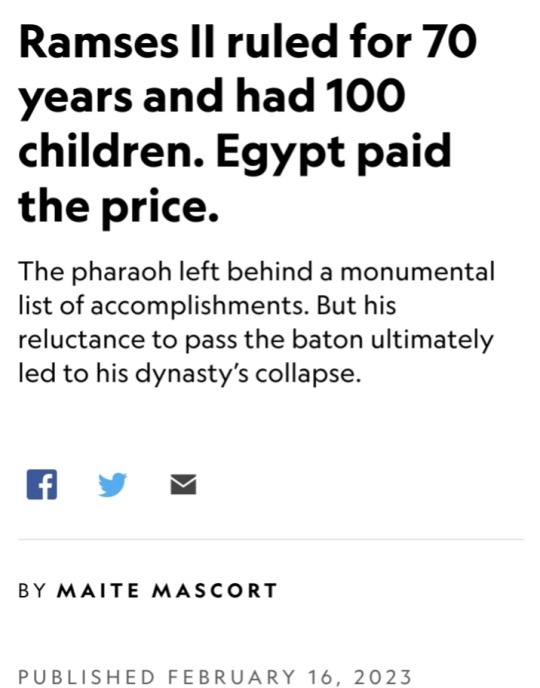

Few individuals in Egypt’s history have aroused as much curiosity, and as much skepticism, as Ramses II, third pharaoh of the 19th dynasty, whom history dubbed Ramses the Great.
Today, Ramses II is probably best known for leaving behind a monumental set of works — palaces, temples, statues, stelae — each one extolling his pharaonic achievements.
Every battle was a mighty triumph, every building spectacular, every statue and public work magnificent, every act a near superhuman achievement.
Ramses’ family came to power as outsiders.
They were northerners hailing from the Nile Delta and rose through military service, rather than southerners rising from elite circles in Thebes.
To rally support, Ramses II used these massive monuments to appeal to the people as part of a campaign to proclaim his greatness for all to see.
Ramses lived around 90 years and ruled for almost 70.
Thanks to his building campaigns, Egyptologists know much about his public accomplishments, but questions about his wives and children still remain.
Great royal wives
One of the most striking aspects of Ramses II’s story is the women who surrounded him:
Great royal wives and concubines, secondary wives and daughters, whom he sometimes “married,” for political show or perhaps for real.
He produced an extraordinary number of sons and daughters:
Some records say as many as a hundred. Because of his long reign, many of his children predeceased him.

Out of all of his wives, only two were known to have had prominent roles:
Nefertari and Isetnofret, the first two named great royal wives.
While the former figures prominently in Egyptian sources and countless representations of her exist, little is known of the latter, almost as if Ramses wanted her hidden.
It is only natural to wonder about the reasons for such unequal treatment.
When he became co-regent with his father, Seti I, Ramses II received a palace in Memphis, just south of the Nile Delta, and a large harem, including the first two great royal wives.
The origins of Nefertari and Isetnofret are unknown but that has not prevented the wildest of speculation about them.
Everything suggests that Nefertari was Ramses II’s favorite wife. Her beauty is attested to in the statues and paintings in her tomb in the Valley of the Queens.
However, it is uncertain what she actually looked like, since some images raise doubts about who is depicted.

For example, in Karnak, a small statue of Nefetari stands at the foot of a colossus representing Ramses II, her husband.
The colossus was later usurped by Pharaoh Pinedjem I, who had his name inscribed on it, and the features of both figures may have been modified.
Was only the name changed? Is that beautiful face still Nefertari’s? Egyptologists believe so.
Nefertari took part in official events alongside Ramses.
She was shown celebrating his coronation, in festivities of the god Min, and in Nebunenef’s enthronement as High Priest of Amun.
Her diplomacy culminated in a peace treaty between Ramses and the Hittites several years after the Battle of Kadesh (1274 B.C.) had resulted in a stalemate between the two powers.
Ramses II showed a clear predilection for Nefertari, devotion worthy of a great love story.
When he built the great temple of Abu Simbel, he made sure that Nefertari, then deceased, was on the facade, next to Tuya, his mother.

In this temple, Nefertari is transformed into Sopdet, the star Sirius, whose appearance presaged the Nile’s annual flooding.
Farther north, another smaller temple dug into rock is dedicated to Nefertari herself.
There, she is identified with the goddess Hathor. Carved into its facade is a tribute:
“Nefertari, she for whom the sun shines.”
Was Isetnofret the forgotten one? So it seems.
Until Nefertari died, around year 26 of Ramses II’s reign, Isetnofret’s likeness did not appear in the many temples the king built in Nubia, nor in those in Karnak and Luxor, where Nefertari is often portrayed.
Isetnofret was finally represented in some temples for her connection with her children.
Nefertari’s image may be seen in more places, but it was Isetnofret who bore her husband the two children closest to his heart.

Sons and daughters
Ramses II had a hundred or so sons and daughters with the wives in his harem.
Of his recognized children, some would play important roles, but only those born to Nefertari and Isetnofret appear on his monuments.
In the Nubian temple of Beit el Wali, a young Ramses, then co-regent with his father, Seti I, is shown suppressing a Nubian uprising.
The pharaoh’s royal chariot is flanked by two figures identified as Amenherkhepshef, his eldest child with Nefertari, and Khaemwaset, Isetnofret’s son.
Of all Ramses II’s sons, Khaemwaset is believed to have been his favorite.
Instead of taking up arms against his elder brother (also named Ramses), Khaemwaset became Grand Master of the Artisans of Ptah, a title in Memphite doctrine equivalent to High Priest of Amun in Thebes.
He also restored a number of pyramids in his father’s name. His work is still evident on the pyramid of Unas, from the 5th dynasty.
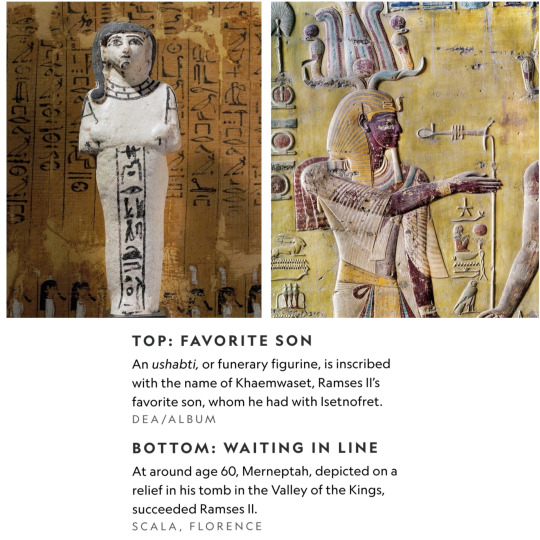
Khaemwaset also planned and directed the work of the “minor galleries,” the Serapeum at Saqqara, the collective tomb of the Apis, sacred oxen of Memphis.
Auguste Mariette’s 1850 excavation of the Serapeum revealed the mummy of a man named Khaemwaset, wearing a golden mask with several ushabtis.
It proved uncertain that it was the mummy of Ramses II’s son, and the location of Khaemwaset’s tomb remains unconfirmed. Much evidence suggests that it is in the necropolis of Saqqara.
The daughters of Ramses II’s great royal wives also held key positions in his court.
In fact, many became great royal wives themselves after marrying their own father.
It had become customary for 18th-dynasty pharaohs to marry their daughters.
While his great royal wife Tiye was alive, Amenhotep III married their daughter Sitamun.
Later, Akhenaten married at least two of the daughters he had with Queen Nefertiti.
No one knows if these marriages were consummated or purely ceremonial.

Ramses II appointed several daughters / great royal wives after the deaths of Nefertari and Isetnofret.
Bintanah (Isetnofret’s firstborn) was followed by Merytamon and Nebettawy (daughters of Nefertari) and Henutmire.
In addition to these daughters, other princesses outside the family also bore the title of Great Royal Wife, such as Maathorneferure, daughter of the Hittite king, and another Hittite princess whose name is unknown.
If Khaemwaset was Ramses II’s favorite son, everything points to Bintanath having been his preferred daughter.
She was given the titles of not only Great Royal Wife but also Lady of the Two Lands and Sovereign of Upper and Lower Egypt.
Bintanath occupies a privileged place on the facade of the temple of Abu Simbel. She and her sister Nebettawy appear on either side of the colossus.
Some historians believe Nebettawy’s mother was Isetnofret, but others consider her Nefertari’s daughter.
Fractured legacy
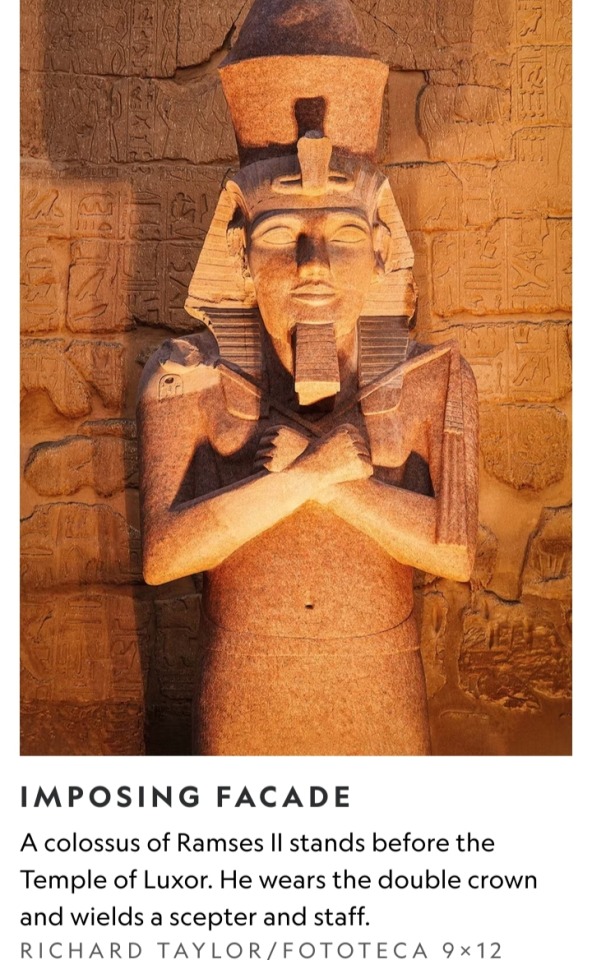
Ramses had no problems siring heirs with his many wives during his long life, but these sons would be forced to be patient; their father held tightly to his throne for almost 70 years.
Ramses had placed his children liberally throughout Egypt’s bureaucracies, corporations, priesthood, and military to foster loyalty he did not naturally inspire.
He was an outsider, a northerner hailing from the Nile Delta, disconnected from the wealthy elites in southern Thebes.
Ramses’ source of strength rested on ties to, not the moneyed or religious classes, but the military. Placing his sons in powerful positions across Egypt helped strengthen Ramses’ hold in these areas.
By the time Ramses II died in 1213 B.C., he was around 90 years old and had outlived many of these sons.
Amenherkhepshef, Ramses’ oldest son and crown prince, died when he was 25 years old.
Khaemwaset also did not outlive his great father and died in his mid-50s around 1215 B.C.
It would be a child of Isetnofret, her son Merneptah, who was 13th in line, who succeeded Ramses.
Merneptah was around 60 years old, well past middle age, when he became pharaoh and donned Egypt’s double crown.
After decades of waiting in the wings to take power, Merneptah might have expected a stable reign, like his father’s, but his hopes were in vain.
During his 10-year reign, his troops were able to defend Egypt successfully from a series of attacks from enemies in the east and west.
But the seeds sown by Ramses II would lead to chaos after Merneptah’s death.
Rivals for the throne, some of whom may have been sons of Ramses II, pushed Egypt into a period of decline and civil war.
By around 1189 B.C., the 19th dynasty would come to an end.

#Ramses II#Ramses the Great#Nefertari#Isetnofret#Seti I#Valley of the Queens#Pharaoh Pinedjem I#Hittites#Battle of Kadesh#Abu Simbel#Tuya#Amenherkhepshef#Khaemwaset#Auguste Mariette#Bintanath#Ancient Egypt#Egyptian Civilization#Egypt#egyptologist#Egyptology#Nineteenth Dynasty of Egypt#19th Dynasty of Egypt
18 notes
·
View notes
Note
Hi, you mentioned following an egyptologist on a recent post about misinformation. Would you mind sharing their blog with me?
@rudjedet and @thatlittleegyptologist are a good start.
Keep in mind that studies of the pyramids, culture, geography, as well as different time periods, are all different speciality studies, and they may not be able to answer everything. If you've got no idea where to look and are desperate for an answer to something they don't specialize in, they're more likely to know where to look than I am. But don't go saying I said that's a sure thing, because it's not.
2 notes
·
View notes
Photo

@vintage_egyptologist
#vintage#photography#photos#egypt#egyptologist#Dark Aesthetic#jewelry#silver#Roaring Twenties#20's#Colleen Darnell#dr colleen darnell
16 notes
·
View notes
Photo

Posted @withregram • @egyptology_persian Pectoral of Sheshonq I The inscriptions on the ends of the solar boat on this gold pendant encrusted with lapis lazuli and glass paste state that it belonged to Sheshonq, the son of Nimlot. This could have been Sheshonq I, the founder of the Twenty second Dynasty, and therefore the pendant would have been inherited by his son Sheshonq Il in whose tomb it was found. It’s an image of a solar barque sailing across the primordial waters below a starry heavenly vault. A solar disc is shown in the center of the boat with a depiction of the goddess Maat standing beside the god Amun-Ra-Horakhty (partly shown) seated on a throne. At the end of the barque stands Maat with winged arms outstretched towards the sun disc. In her right hand she holds a plume (a symbol of truth, justice, harmony, morality, righteousness, order, and cosmic balance). In the left she holds a hieroglyph composed of the nefer sign (a symbol of perfection or completeness), the Wadjet-eye (a symbol of eternal rebirth), and the neb basket (the word used for 'all' or 'every', and 'lord' or 'master'). Ca. 945-924 BC Cairo Museum Photo by sergiothirteen . #cairomuseum #grandegyptianmuseum #Egyptologist #neuesmuseum #newkingdom #archeology #amazingegypt #ancientegypt #ancient #ancient_history #egyptianmuseum #egyptology #egyptianmagic #egyptianmythology #egyptianhistory #iloveegypt #visitegypt #باستان #باستان_شناسی #تاریخ_مصر #مصر_باستان #تاریخ_باستان #louvremuseum #britishmuseum (at Egyptian Museum) https://www.instagram.com/p/ChaWS2UMKer/?igshid=NGJjMDIxMWI=
#cairomuseum#grandegyptianmuseum#egyptologist#neuesmuseum#newkingdom#archeology#amazingegypt#ancientegypt#ancient#ancient_history#egyptianmuseum#egyptology#egyptianmagic#egyptianmythology#egyptianhistory#iloveegypt#visitegypt#باستان#باستان_شناسی#تاریخ_مصر#مصر_باستان#تاریخ_باستان#louvremuseum#britishmuseum
6 notes
·
View notes
Photo

#Repost @brews.with.beerkowski Happy Halloween, my fellow ghosts and gouls! 👻 🎃 My costume this year was inspired by this rad can art by @bottlelogicbrewing. This tart peach ale, called Perfectly Preserved, was a gift from @drunkenshehulk. She knew I needed another Egyptian beer in my can collection. Did you know I have a graduate degree in Egyptology? And that I have worked in a tomb in Egypt? I’ve seen many mummies in my day. 😁🇪🇬 My fantastic makeup was done be @dontpanicits42 and my hair was done by @lydia.pineault 🫶 #happyhalloween #halloween #halloweencostume #mummy #egypt #egyptologist #beer #beerbabesfamily https://www.instagram.com/p/CkYyi9_Jgto/?igshid=NGJjMDIxMWI=
6 notes
·
View notes
Text
Hey guys!
I have a question for the Egyptologists on here,
I would really like to go to school to get an Egyptology degree, but I have no idea where to start. The only school experience I have is a High School GED, would you guys recommend going to a community college, and then go from there? If so, what classes do I take? It’s all so overwhelming and I’d appreciate all the help I could get!
5 notes
·
View notes
Text
Definitely Egyptians did it!
The most popular and scientifically accepted answer to the question of who built the Egyptian pyramids is the ancient Egyptians, which is the same belief Mickey Mouse had about the pyramids. However, the assumption that the pyramids are human creation opens the door for many questions like how did the Egyptians cut and lift the blocks which weigh tens of tons up the sides of the pyramids? Or how was the perfect location to build these pyramids chosen in the first place?
According to the National Museum of Natural History, Egyptologists believe that the location of the Egyptian pyramids was chosen because it provided ground high enough from the Nile River level to avoid the danger of the river flooding and a firm rock base capable of supporting the weight of the heavy pyramids.
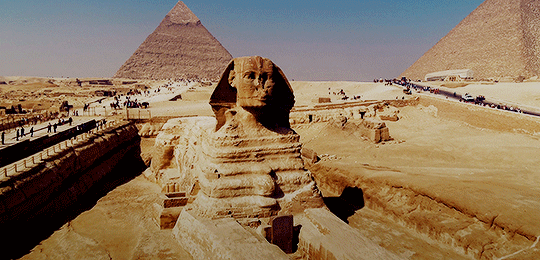
0 notes
Photo
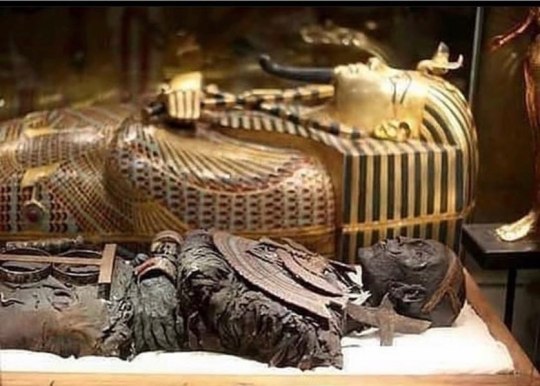
Coffins of Tutankhamun𓏤 The Pharaoh 𓉐𓉼 “pr-aA” Tutankhamun (𓇋𓏠𓈖𓏏𓅱𓏏𓋹𓋾𓉺𓇑) “twt-ankh-imn~hekA-iwnw-šmAi)” ‘The Living Image of Amun, Ruler of Southern Iwnw (Heliopolis)’ died aged only 19.𓏤 In the first photo you can see his replicated mummified body and one of his 4 coffins at the British Museum. The sarcophagus was one of his 4 coffins 𓏘𓂋𓋴𓊭 “qrsw” which were placed were fitted into the burial 𓈎𓂋𓋴𓌟𓏏𓊭 “krs” chamber inside his tomb 𓂝𓂝𓇋𓉴 “aai”. The other chambers were filled with goods and treasures that the pharaoh might need in the Afterlife 𓋴𓐍𓏏𓇏 𓇋𓄿𓃭 “sḫ.t-ı͗Arw” Field of Reeds (Wenis - Pyramid Text). It was intended, of course, for the pharaoh’s mummy to lie inside his tomb forever 𓆖.𓏤 But the abundance of gold 𓋞 “nbw” and jewellery would usually attract robbers—probably within only a few years 𓆴𓏪 “rnpt” of the pharaoh’s burial. But, incredibly, after two early break-ins, during which few treasures was stolen, Tutankhamun’s tomb remained undisturbed for more than 3000 𓆾 years until it was discovered in 1922 by Howard Carter.𓏤 Inside the tomb were statues 𓂙𓏏𓏭𓀾 “hnty”, furniture 𓇋𓊪𓂧𓆱𓏫 “ı͗pdw”, jewellery 𓐢𓂋𓅱𓏬 “aprw” and many other precious items left exactly as they had been placed all those centuries before. 𓋹𓎬𓋹𓎬𓋹𓎬𓋹𓎬𓋹𓎬𓋹𓎬𓋹𓎬𓋹𓎬𓋹𓎬𓋹𓎬𓋹𓎬𓋹𓎬𓋹𓎬𓋹𓎬𓋹𓎬𓋹𓎬 Follow: @egyptologylessons 𓋹𓊽𓋴𓆖𓎛𓇳𓎛 𓊁𓊁𓊁𓊁𓊁𓊁𓊁𓊁𓊁𓊁𓊁𓊁𓊁𓊁𓊁𓊁𓊁 #egypt #egyptian #ancient #ancientegypt #hieroglyphics #ägypten #middleeast #worldtourismday #thisisegypt #egyptologist #myegypt #egyptianhistory #egyptology #archeology #hieroglyphs #madeinegypt #egypte #egyptians #egyptshots #loveegypt #discoveregypt #tutankamun #coffin #egyptiantreasure #pharaoh #egyptianburial https://www.instagram.com/p/Cki-5xvuP0T/?igshid=NGJjMDIxMWI=
#egypt#egyptian#ancient#ancientegypt#hieroglyphics#ägypten#middleeast#worldtourismday#thisisegypt#egyptologist#myegypt#egyptianhistory#egyptology#archeology#hieroglyphs#madeinegypt#egypte#egyptians#egyptshots#loveegypt#discoveregypt#tutankamun#coffin#egyptiantreasure#pharaoh#egyptianburial
35 notes
·
View notes
Photo

The birth of the Sun from the womb of the Goddess Nut; the lotus-like rays of the Sun shine on the Hathor-head represented upon the roof of Her Temple. The body of Nut is covered with flowers; next to Her ankles is depicted the Cancer zodiac sign. Temple of the Goddess Hathor at Nitentóre (Dendera), detail from the ceiling of the Outer Hypostyle Hall #iregipto #egyptpassion #mbplanet #ancientegypt #egyptology #kemetic #ancientegyptian #egyptologist #anticoegitto #egittologia #egiptologia #antiguoegipto #religion #pagan #paganism #polytheism #kemet #egypt #archaeology #egyptiancalendar #sun #nut #goddessnut #goddess #goddesses #dendera #temple #cancerzodiac #zodiac (at Dendera Temple complex) https://www.instagram.com/p/Cg1xxzWrhvv/?igshid=NGJjMDIxMWI=
#iregipto#egyptpassion#mbplanet#ancientegypt#egyptology#kemetic#ancientegyptian#egyptologist#anticoegitto#egittologia#egiptologia#antiguoegipto#religion#pagan#paganism#polytheism#kemet#egypt#archaeology#egyptiancalendar#sun#nut#goddessnut#goddess#goddesses#dendera#temple#cancerzodiac#zodiac
152 notes
·
View notes
Text
Old letters about the British hero who discovered King Tut’s tomb and its 5,000 treasure artifacts have revealed he was also an artifact thief, confirming old suspicions circulating in Cairo in the 1920s and 1930s.
50 notes
·
View notes
Text
#OTD in 1835 – The coffin of mummy, Takabuti, was opened and unrolled in Belfast Natural History Society’s museum at College Square North.
Takabuti was the first Egyptian mummy to be brought to Ireland. After the Napoleonic Wars there was a brisk trade in Egyptian mummies. She was brought to Belfast in 1834 by Thomas Greg of Ballymenoch House, Holywood, Co Down. Her hieroglyphs were deciphered by a leading Egyptologist from Ireland, Dr Edward Hincks, of Killyleagh, Co Down. The horizontal inscriptions gave the names and titles of…

View On WordPress
#Ballymenoch House#Belfast Natural History Society’s museum#Co. Down#College Square North#Dr Edward Hincks#Egypt#Egyptian Mummy#Egyptologist#Holywood#Ireland#Killyleagh#Northern Ireland#Takabuti#Thomas Greg
9 notes
·
View notes